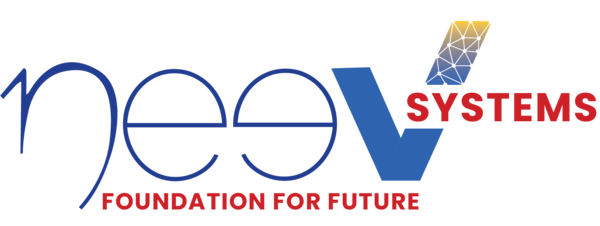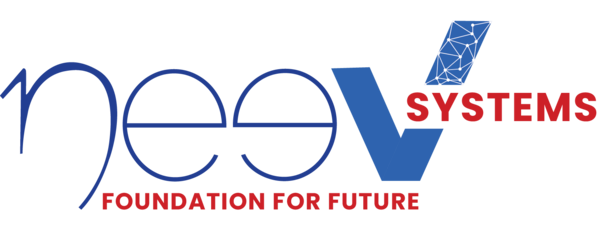Salesforce is a leading CRM tool that equips sales and IT teams with a comprehensive suite of tools to streamline processes, boost productivity, enhance customer interactions, and more. However, mid-market companies often fail to utilize Salesforce to its fullest potential due to a lack of skilled resources and limited budgets. Failure to utilize CRM tools often results in lost opportunities and missed sales quotas. In fact, 76% of companies say that poor adoption of sales tools is a top reason teams miss their sales quotas. The need of the hour is to adopt strategies that help in increasing Salesforce utilization and ensure great ROI on Salesforce investments.
In this blog, we will delve into the intricacies of Salesforce adoption, understand what it is and why it is important, identify the challenges of Salesforce adoption, and identify strategies to increase it.
What is Salesforce Adoption?
Salesforce adoption refers to the extent to which Sales and IT teams within an organization actively utilize the platform to manage customer relationships, track sales activities, and drive business outcomes. It goes beyond merely implementing the software; it entails integrating Salesforce into daily workflows and harnessing its capabilities to achieve strategic objectives.
Why is Salesforce Adoption Important?
The significance of Salesforce user adoption cannot be overstated. When employees embrace Salesforce and make it an integral part of their work routines, businesses can experience a myriad of benefits:
- Improves Productivity: Proper utilization of Salesforce can increase productivity as it streamlines workflows and automates repetitive tasks, allowing employees to focus on more strategic activities. When users fully embrace the platform, they can leverage its capabilities to work more efficiently and effectively.
- Enhances Customer Experience: Salesforce allows businesses to track customer interactions, preferences, and history, enabling them to provide personalized experiences. When users actively engage with Salesforce, they can leverage these insights to deliver better service and build stronger relationships with customers.
- Ensures Accurate Reporting: Salesforce provides robust reporting and analytics tools that enable businesses to gain actionable insights from their data. When users consistently input and update data in Salesforce, organizations can generate accurate reports and make informed decisions based on real-time information.
- Increases Revenue: Salesforce ultimately contributes to increased revenue generation by improving productivity, enhancing customer experience, and enabling accurate reporting. When users adopt Salesforce and utilize its features effectively, businesses can drive sales, upsell opportunities, and customer retention.
- Nurtures Lead: Salesforce allows businesses to track leads throughout the sales cycle, from initial contact to conversion. When users actively engage with Salesforce, they can effectively nurture leads by providing timely follow-ups, personalized communication, and targeted marketing campaigns.
- Consolidates Data in One Place: Salesforce serves as a centralized hub for storing and accessing customer data, sales information, and other critical business insights. When users consistently input data into Salesforce and keep it up to date, organizations can avoid siloed information and ensure data integrity across departments.
- Improves Collaboration: Salesforce facilitates collaboration among team members by providing a platform for sharing information, collaborating on projects, and communicating effectively. When users embrace Salesforce, they can leverage its collaborative features to work together more efficiently and achieve common goals.
Challenges Hindering Salesforce User Adoption
- Lack of understanding of Salesforce capabilities: When users don’t fully comprehend Salesforce’s capabilities, they may underutilize the platform, limiting its potential to drive business value. This can lead to inefficiencies, missed opportunities, and frustration among users who are unable to leverage Salesforce effectively.
- Lack of skilled in-house resources: Without sufficient skilled personnel to administer, customize, and support Salesforce, organizations may struggle to fully implement and maintain the platform. This can result in suboptimal configurations, delayed projects, and a lack of support for users, hindering adoption and overall effectiveness.
- Teams depend on other tools: If teams resort to using alternative tools instead of Salesforce, it can create data silos, inconsistency, and fragmentation of information. This not only undermines the integrity of data but also impedes collaboration, visibility, and reporting across the organization.
- Integration issues: Integrating Salesforce with existing systems and processes can be complex and challenging. Issues such as data synchronization problems, compatibility issues, and technical constraints can arise, hampering user adoption and limiting the effectiveness of Salesforce as a centralized platform.
- Lack of knowledge transfer: Inadequate training and knowledge transfer initiatives can hinder users’ ability to effectively use Salesforce. Without proper education and support, users may feel overwhelmed or unsure about how to navigate the platform, leading to low adoption rates and a reluctance to embrace Salesforce in their daily workflows.
- Limited budget: Constraints on budget allocation for Salesforce implementation, customization, training, and support can restrict the resources available for driving user adoption initiatives. This may result in inadequate investments in critical areas such as training, user experience enhancements, and ongoing support, ultimately impeding adoption and hindering the realization of Salesforce’s benefits.
These challenges ultimately result in the following:
- Missed sales targets: Inefficient use of Salesforce and lack of adoption can lead to missed opportunities, delayed sales cycles, and poor customer engagement, ultimately impacting sales performance and revenue generation.
- Revenue loss: Suboptimal utilization of Salesforce, integration issues, and inadequate support can result in lost revenue opportunities, reduced customer satisfaction, and competitive disadvantage in the market.
- Higher spending: Dependence on shadow tools, integration challenges, and lack of skilled resources can lead to increased operational costs, redundant systems, and inefficiencies, resulting in higher expenditures without commensurate returns on investment.
- Productivity loss: When users struggle to use Salesforce effectively due to lack of understanding, inadequate training, or reliance on shadow tools, it can lead to productivity loss, inefficiencies, and frustration among employees, impacting overall organizational performance and effectiveness.

Maximize Salesforce Efficiency
Strategies To Increase Salesforce Adoption
- Track usage and adoption rates: First, monitor Salesforce usage and adoption rates within your organization. Salesforce provides insights into adoption patterns and areas needing improvement. By tracking metrics such as login frequency, feature usage, and data input consistency, you can identify trends and tailor adoption strategies accordingly.
- If you’re facing low Salesforce user adoption or want to identify and eliminate efficiency gaps? Get a free salesforce health check with our experts.
Schedule a free health check today
- Get a clear understanding of your organization’s needs: Understand your business’s specific needs and pain points, and then align Salesforce implementation with your organizational goals to derive maximum value.
- Gather user feedback to understand roadblocks: Actively solicit feedback from users to identify obstacles in adoption and areas for improvement. By listening to user experiences, you can address concerns, make necessary adjustments, and enhance user satisfaction with Salesforce.
- Get leadership onboard: Secure leadership support and involvement to drive organizational buy-in and foster a culture of Salesforce adoption. When leaders champion Salesforce initiatives, allocate resources, and lead by example, they signal its importance and encourage widespread adoption throughout the organization.
- Ensure effective training within your organization: Provide comprehensive training to ensure users have the knowledge and skills to leverage Salesforce effectively. From basic navigation to advanced features, tailored training programs help users feel confident and empowered to use Salesforce in their daily workflows.
- Set measurable goals and KPIs: Establish clear, measurable objectives and key performance indicators (KPIs) to assess Salesforce adoption and success. By defining specific targets, you can track progress and identify areas needing improvement.
- Keep your teams informed and updated: Regular communication and updates about Salesforce enhancements, best practices, and success stories keep users engaged and informed. By sharing relevant information and fostering a sense of community, you can encourage continuous learning and enthusiasm for Salesforce.
- Take the help of Salesforce communities and support: Leveraging the broader Salesforce community and support resources provides access to expertise, best practices, and solutions to common challenges. Encourage users to engage with user groups, forums, and support channels to gain knowledge and solutions for their problems.
- Ensure high data quality: To maintain the data quality in Salesforce, it is important to ensure accurate and complete data entry from the start. By implementing data validation rules, training on data entry best practices, and regularly auditing data quality, you ensure Salesforce remains a trusted source of information.
- Regularly evaluate and improve: Continuously assess Salesforce usage, user feedback, and business needs to adapt and optimize your Salesforce strategies. By iterating on adoption initiatives and making incremental improvements, you can maximize the value derived from Salesforce over time.
- Leverage customizations to simplify UI: To enhance Salesforce adoption among your sales team, streamline the user interface by customizing the homepage with relevant shortcuts, simplifying page layouts to display essential information, and streamlining record creation with pre-populated fields and quick actions. Utilize automation to reduce clicks and navigation, making common tasks more efficient.
- Get rid of legacy solutions that no longer provide value: Phase out outdated or redundant systems and processes to fully embrace Salesforce as the primary platform for your needs. By eliminating legacy solutions and consolidating operations within Salesforce, you can simplify workflows and promote adoption within your organization.
- Conduct regular audits to find automation opportunities: Conduct periodic reviews of processes and workflows to identify opportunities for automation and optimization within Salesforce. By automating repetitive tasks, streamlining processes, and reducing manual effort, your organization can increase efficiency and user satisfaction with Salesforce.
Conclusion
As businesses continue to navigate the dynamic landscape of sales and customer relationship management, the imperative to harness the full potential of Salesforce becomes increasingly apparent. In this journey towards enhanced productivity, streamlined operations, and elevated customer experiences, it’s essential to acknowledge both the challenges and the strategies outlined to drive Salesforce adoption.
Looking ahead, the path to Salesforce’s success lies in proactive collaboration and partnership. While internal efforts are pivotal, the guidance and expertise of a reliable Salesforce implementation and management partner can amplify your endeavors. By forging a symbiotic relationship with a trusted service provider, organizations can tap into specialized knowledge, tailored solutions, and ongoing support that accelerates Salesforce adoption and maximizes ROI.
How Neev Systems Can Help?
Neev Systems specializes in providing end-to-end Salesforce Application Management Services and Implementation tailored to meet the unique needs of modern enterprises. With our dedicated team of certified Salesforce experts, we offer comprehensive solutions designed to optimize customer relationship management, streamline business processes, and drive digital transformation effectively.
You can also benefit from our low-risk, cost-effective, flexible support subscription model – Sparkfire, wherein our Cloud Architect and full-time SFDC Sales Cloud Specialist will integrate seamlessly with your sales and IT teams, tackling Salesforce adoption challenges directly and empowering your in-house team to concentrate on strategic initiatives and consistently meet sales targets. With Sparkfire, you can achieve – increased sales productivity and efficiency (up to 54%), improved data quality and reporting accuracy (up to 86%), reduced manual work and associated costs, and enhanced user satisfaction and buy-in.
Get in touch with us, and let’s unlock the full potential of Salesforce to drive sustained growth and competitiveness in your industry.

Ready to Boost Your Salesforce Utilization?
Take the first step towards enhanced productivity and user satisfaction now.

Manohar Reddy Ramreddygari
With 12+ years in the Salesforce ecosystem, Manohar specializes in delivering solutions across Sales, Service, Experience, and Revenue Clouds. Proficient in Lightning Web Components, Einstein Bots, and CPQ, he ensures seamless integration with external platforms. Manohar focuses on leveraging Salesforce technologies to optimize operations and drive strategic growth.


